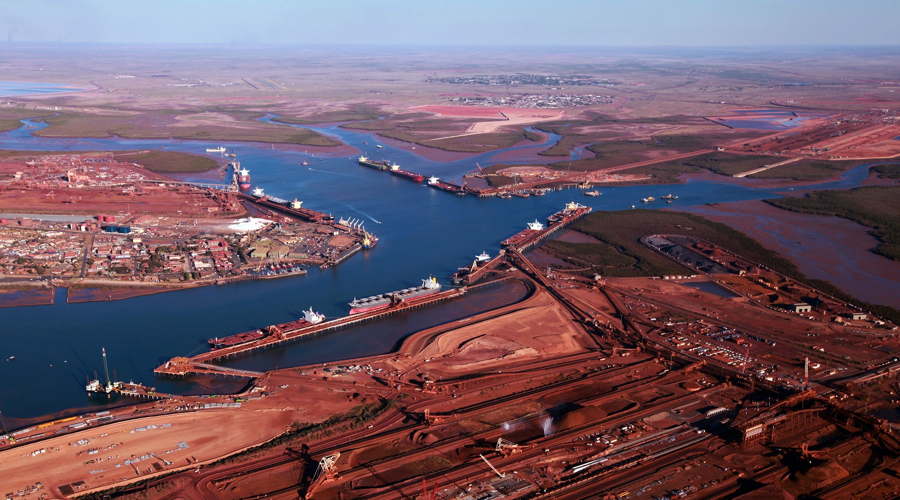
BHP Billiton (ASX:BHP) and Rio Tinto (LON:RIO) may cut their full-year iron ore guidance this week, as they announce March quarterly numbers, analysts believe.
According to Deutsche analyst Paul Young, BHP is set to post flat or declining growth for all its four key “pillar” commodities, delivering a total decrease of about 8% when compared to the same period last year, Financial Review reports.
The article also quotes UBS analyst Glyn Lawcock saying that Rio’s iron ore output “may surprise to the downside”, with exports out of Western Australia to come in at 77.6 million tonnes:
That represents an annualised run rate of 311 million tonnes. Rio has guided to ship 335mtpa from the Pilbara for 2016, and “around” 350mtpa globally.
Iron ore prices climbed last week to nearly $60 a tonne. The surge came after Chinese imports continued to impress with March cargoes of 85.8 million tonnes, up 16.5% from February. For the first quarter imports are up 6.5% year on year despite weather-related disruptions at Port Hedland in West Australia, the world’s busiest dry bulk terminal.
Deutsche analyst Paul Young says BHP is set to post flat or declining growth for all its four key “pillar” commodities.
In December imports reached a record 96 million tonnes and cargoes for the whole of 2015 also set a new record of 952.7 million tonnes, but based on Q1 numbers, 2016 could turn out to be an even better year.
Domestic Chinese producers which struggle with low grades and high production costs have been gradually pushed out of the market and replaced by imports. Imports now represent nearly four-fifths of Chinese steelmakers’ iron ore supply. Shipments from Port Hedland set a new record in March of 39.5 million tonnes, 32.6 million tonnes of which was destined for China.
The country’s miners produced some 350 million – 400 million tonnes a year on a 62% Fe-basis in 2014, although reliable stats are lacking (this figure is calculated working backwards from pig iron production). According to some estimates domestic output has now fallen below 200 million tonnes with further declines likely.